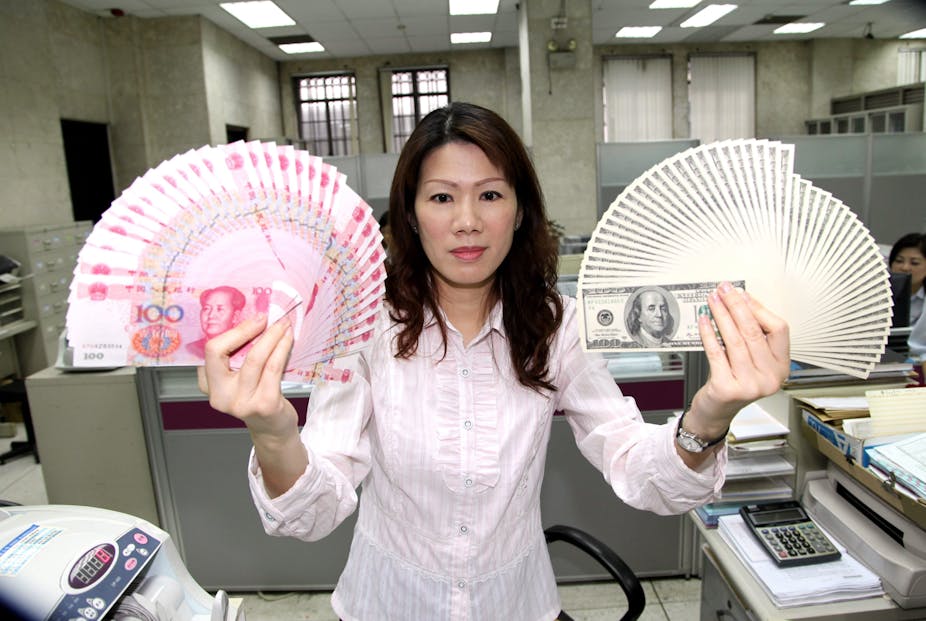When I taught foreign policy in the United States, my students would often answer one question incorrectly, albeit in a way that speaks to a larger truth about US foreign policy. In lecturing on President Richard Nixon’s 1971 visit to China, I would frequently ask: “Why did Nixon go to Beijing?” Their recurring response would be to stress the importance of China as a market for US goods. With one billion potential customers to be served, Nixon was opening a new frontier for American commerce.
Of course, this answer was wrong in a narrow sense: Nixon went to China to enable a “rebalancing” of the global distribution of power. With National Security Adviser Henry Kissinger, Nixon saw China as a counterweight to the Soviet Union, and hoped that Chinese assistance might enable the US to wind down its involvement in Vietnam. To the extent that economics mattered at all, it was in the context of persistent monetary crises that were seen as signalling an end to US hegemony – and so the need for a more diplomatically attuned approach to the Cold War.
Viewed from the context of mid-1971, my students’ answers were wrong. However, in another sense, their answers reflected a larger truth: that US foreign policy cannot be reduced to the dictates of the balance of power. Instead, the American public often sees the world through a liberal lens, in which competition provides a means to shared growth and prosperity. In this light, a pragmatic “balance of power” strain in US politics must be juxtaposed against a broader idealism.
Speaking to the continued relevance of these tensions, US foreign policy today walks a tightrope, best appreciated through the lens of what Henry Kissinger termed a “constructive ambiguity”. On the one hand, there is anxiety regarding China’s potential as a rival to the US. But on the other hand, there is hope that China may play a role as a partner in politics and commerce. In their third debate last week, Barack Obama and Mitt Romney sought to navigate between these two tendencies, offering an ambiguous window into their potential China policies.
Obama argued that “China [is] both an adversary but also a potential partner in the international community if it’s following the rules”. Speaking with respect to trade deficit, Obama also stressed his toughness in bringing cases against China at the WTO – to the benefit of “steelworkers in Ohio and throughout the Midwest, Pennsylvania [who] are in a position now to sell steel to China”. Note the attention to swing-state voters.
Similarly, Romney held that “China has an interest that’s very much like ours [and] … so we can be a partner with China”. Like Obama, Romney also stressed the need for toughness and declared that “on day one” he would “label [China] a currency manipulator which allows us to apply tariffs where they’re taking jobs [and] intellectual property”.
To be sure, Obama supporters who feel Romney was too belligerent should hold those feelings in check. Back in 2008, Barack Obama and Hillary Clinton were engaged in their own competition to be tough on China – leading Obama to argue in an April 2008 speech to Pennsylvania workers that China was “grossly undervaluing their currency, and giving their goods yet another unfair advantage” and to lament that “the Bush administration has failed to do anything about this … That’s why I co-sponsored the Currency Exchange Rate Oversight Reform Act. And that’s why as President, I’ll use all the diplomatic avenues open to me to insist that China stop manipulating its currency.” Of course, as President – like many of his predecessors, from Ronald Reagan to George W. Bush – Obama’s policy would prove less confrontational with China.
These contradictory dynamics have been in evidence over the past four years. In responses to the Global Financial Crisis, US-China fiscal coordination played a key role in enabling the tentative global recovery. Over the early months of the Obama term, some even spoke of the US and China as a “G-2”, working together to put a floor under the collapsing global economy. Yet, this optimism has since faded. For all of Obama’s “hope and change” rhetoric, he has pursued a pragmatic policy toward China. In discussions with ex-Clinton staffers in his administration, Obama has suggested that they had been too naïve in enabling China’s 1998 entry into the WTO. As one aide summed up Obama’s view of China — “he’s no Adam Smith”. Tensions with China would increase over 2009 with respect to US debt and in tensions at the Copenhagen summit.
In this light, Obama has mirrored Nixon and Kissinger, announcing a “rebalancing” in a “pivot” to the Asia-Pacific. Yet, one should not overrate the importance of these balance-of-power styled moves, any more than Nixon’s 1971 initiative should be seen solely through the lens of Kissingerian trilateral diplomacy. Only a few years ago, cooperation in responding to the GFC spoke to the reality of common US-China interests. While aspirations to “G-2” collaboration were overrated, so is current pessimism regarding the US pivot and trade conflict. Listening between the lines, Obama and Romney each recognise this – and so realist concerns that have shaped US foreign policy from Nixon through to the present day should be measured against a similarly enduring internationalism.
Perhaps the most important insight in making sense of broader patterns of US-China interactions and the recent Obama-Romney debate comes from Kissinger: a little “constructive ambiguity” goes a long way.

